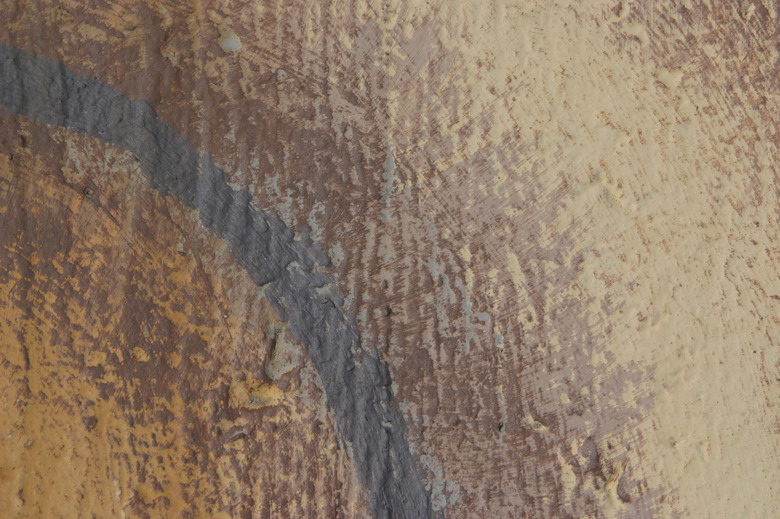Can You Put Spackle In Concrete Wall Holes?
When you are ready to repair your basement walls, the question of how to fill in those holes arises. When painting drywall, you simply apply spackle to the holes and imperfections and get on with the business of painting. Unfortunately, common spackling products do not adhere to concrete. Concrete patch is used for repairs of holes or large cracks, while a paste of Portland cement and water or a concrete caulking product are suitable for smaller hairline cracks. Unlike repairing drywall, filling the holes requires more than just mashing the patching product into the holes. Following the proper procedures ensures a satisfactory repair.
Concrete Walls
Concrete Walls
Concrete walls develop cracks over time as a house settles. The majority of these cracks do not affect the structural integrity of a home. They may, however, cause water to leak or seep into a basement, causing problems with moisture, mold or mildew. Holes in concrete walls are more likely the result of drilling into the wall to secure shelving or to hang other items on the wall. To create a smooth surface when these items are removed, the hole must be filled. Common spackling products do not adhere to the concrete and are not suitable for repairing holes or cracks in your concrete walls.
Repairing Holes
Repairing Holes
Repairing the holes in a concrete wall involves undercutting the hole. Use a cold chisel and hammer to make the space wider underneath the hole. Remove loose material with a wire brush, and blow out any remaining debris. Apply a coat of concrete adhesive to the hole. After allowing it to dry to a tacky state, tamp concrete patch into the opening with a pointing trowel. Mist the area with water and cover it with plastic sheeting. Continue to remoisten the area and re-cover it for about five days to cure the product. Now your wall is ready for painting.
Repairing Cracks
Repairing Cracks
To repair hairline cracks, prepare a thick paste of Portland cement and water. Wet the wall area before applying the paste to prevent the wall from leaching the moisture from the mixture. Spread the mixture over the crack with a putty knife, pressing it into the crack. Smooth the surface with the putty knife or a trowel. Dampen the area and cover it with plastic as described in the Repairing Holes section. Concrete repair caulk is also suitable for repairing hairline cracks. The caulk is applied using a caulking gun, pushing a thin bead of the substance into the opening. For larger cracks, the procedure is similar to repairing a hole in a wall. The crack must be undercut and cleaned out before you apply concrete patching material. The repaired crack must be cured by applying moisture and plastic sheeting as you would when repairing a hole.
Finishing
Finishing
Painting a concrete wall adds a splash of color to an otherwise drab room and covers the wall repairs. After repairing the holes in a concrete wall, prepare the wall for painting by vacuuming or wiping down the wall to remove all traces of dust. Apply a primer that is suitable for concrete. After allowing the primer to dry completely, apply a concrete-compatible paint in the color of your choice. Two or three coats may be necessary to provide complete coverage. Choose a thick roller cover suitable for use on concrete to fill in the nooks and crannies in the surface. A paintbrush may be needed for hard-to-reach places. You may also use a paint compressor if one is available.
